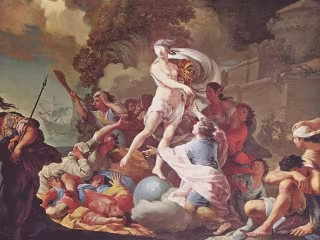Izanami: The Goddess of Creation
0
Ghostwriter
Blog Writer
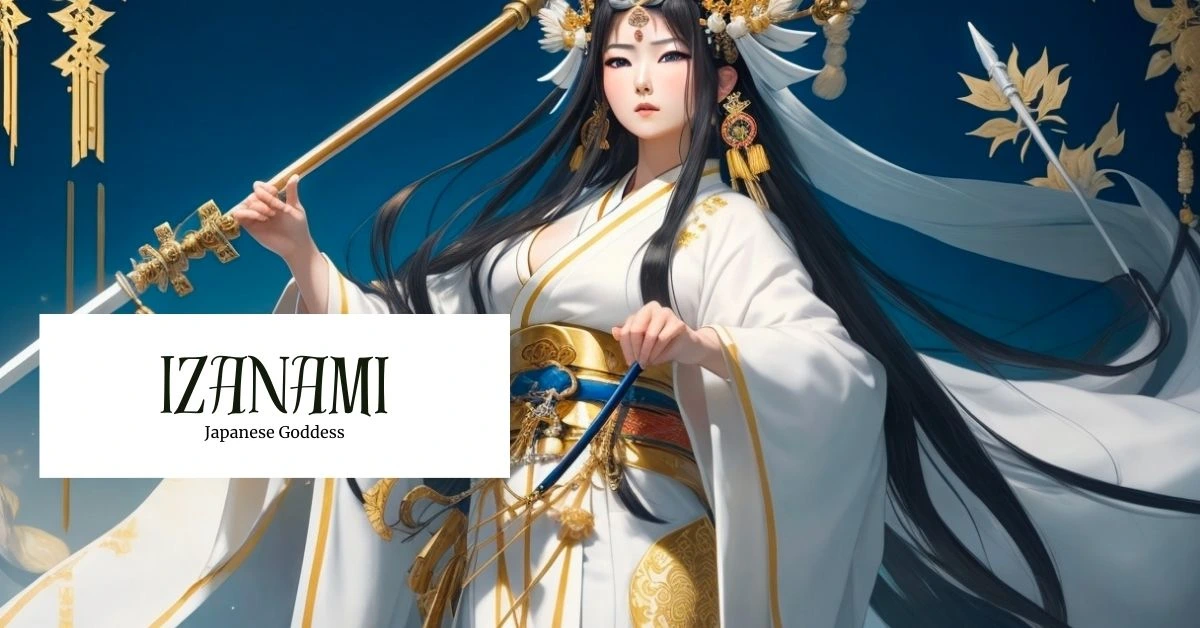
As one of the oldest and most significant deities in Japanese Mythology and the Shinto religion, Izanami played a central role in creating the world and gave birth to many revered deities. From her mysterious emergence to her instrumental role in the formation of Japan and the kami, her story has endured through generations. Even in death, her tragic encounter and descent into the underworld of Yomi have left an indelible mark on the cultural tapestry of Japan.
Overview of Izanami
Alongside her brother and husband Izanagi, Izanami is a primordial god in the Shinto religion. Izanami-no-Mikoto (Japanese: 伊弉冉尊 or 伊邪那美命; meaning), also known as Izanami-no-kami (“Izanami”) holds a significant place in Japanese mythology as the goddess of creation. Her name translates to she who invites, and her remarkable feats include giving birth to numerous deities and creating Japan.
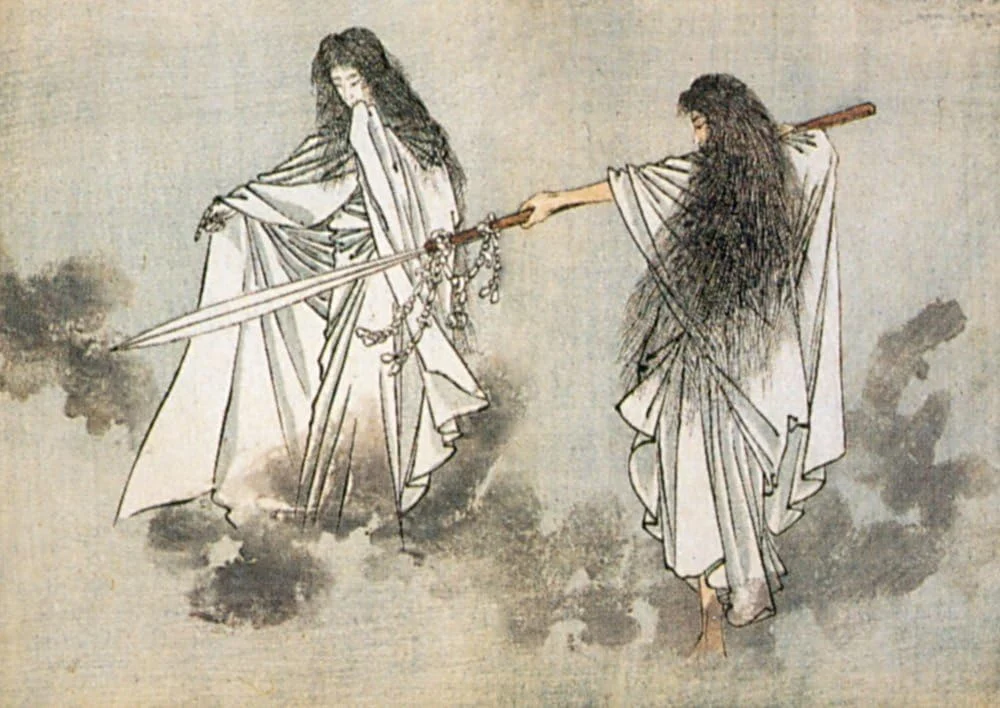
Source: Amazon
Titles
The Goddess of Creation
The Divine Weaver of Existence
Goddess of Death
Shinto Mother Goddess
Abilities
Celebrated as the divine weaver of creation and as the goddess of creation, her most notable skill is bringing forth new life. Recognized for her contribution to the creation of the Japanese Islands and being the origin of many essential and fundamental kami, she bestowed upon the world the kami of the sea, wind, trees, mountains, and other natural phenomena. Even in the throes of a painful death, Izanami gave birth to Kami from her tears of pain.
Even after her tragic demise and descent to the underworld, Yomi, the goddess of death, obtained a set of formidable abilities. These included the power of death itself and the ability to control gods and spirits dwelling within the realm of the dead (“Izanami, Japanese Goddess: Mythology & Role | Who Is Izanami-No-Mikoto?”).
Characteristics
Japanese artwork illustrates Izanami as a youthful woman with ebony hair that cascades down her back, elegantly draped in flowing robes resembling the traditional kimono. Her appearance is noteworthy for its graceful contours, and she models intricately detailed traditional garments that symbolize her divine status.
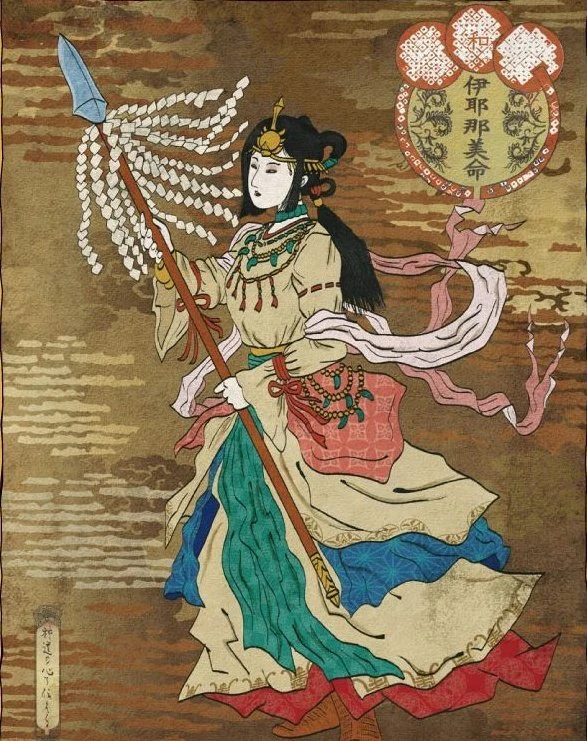
Source: X
Traits
The goddess Izanami has profound knowledge and understanding of the universe. Her wisdom comes from her significant contributions to the world’s creation and ability to maintain the realms of life and death. As the goddess of creation, her power is unmatched, and her understanding of the realm of death is unparalleled. Izanami can cross both domains making her one of the most respected and admired deities in Japanese mythology.
Symbols
Izanami reigns supreme as the embodiment of creation. Among the many symbols associated with her, one of the most prominent is the Ama no Nuboko, a spear encrusted with precious jewels. According to many myths, Izanami and her partner, Izanagi, used this weapon to create the first islands of Japan, bringing forth land from the endless expanse of the sea.
Another powerful symbol of Izanami’s creative force is weaving tools. These tools include looms, shuttles, or threads: all symbolize the goddess’s ability to shape the very fabric of existence itself. Through her skill as a weaver, Izanami can craft the intricate patterns and textures of the cosmos, bringing forth new life and imbuing the world with meaning and purpose.
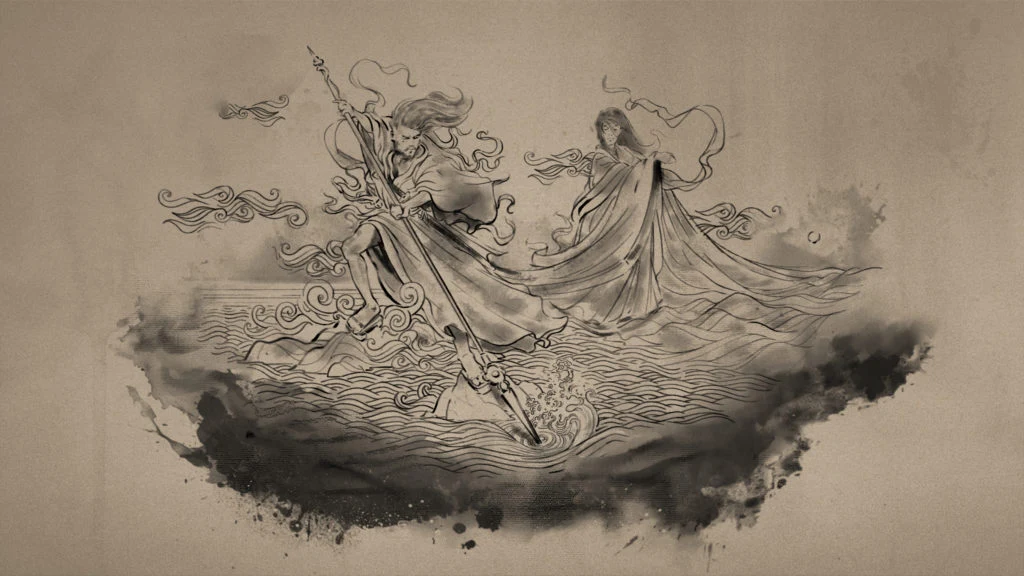
Source: Taleofronin
Festivals and Rituals
Obon, also known as お盆 in Japan, is an essential holiday that follows New Year’s Day. As a Buddhist festival, Obon is celebrated in mid-August to welcome the spirits of ancestors. According to Buddhist belief, during this occasion, the souls of our ancestors come to visit and are revered (“What Is Obon?”). As such, Izanami, the goddess of death, is often remembered and honored during Obon.
To commemorate this festival, people perform various rituals, visit ancestral graves, and offer food, drinks, and incense to honor the departed. It is a time to respect our ancestors and seek blessings from the Shinto mother goddess. Obon is a time to connect with our roots, family, and history. This festival highlights the importance of honoring and remembering those who came before us and acknowledging their role in our lives.
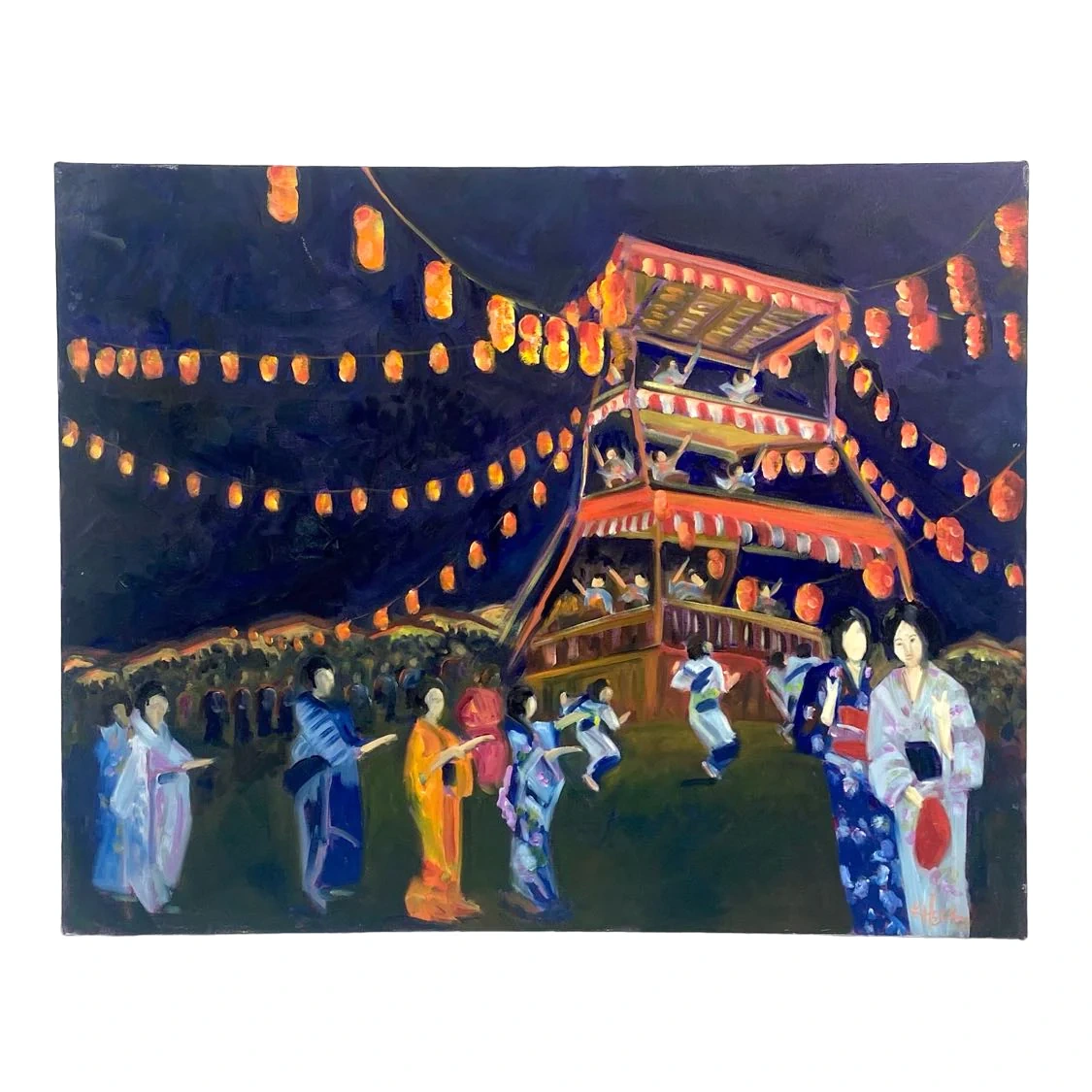
Source: Found Furnishings
Legends associated with Izanami no mikoto
The goddess of creation has been a prominent character in Japanese history, captivating many with her enchanting myths and legends. These timeless tales, with their various interpretations and renditions, provide us with profound insights into the life and persona of the goddess. By delving deeper into these captivating stories, we gain a greater understanding the impact of the Shindo Mother Goddess.
Origin story
The world’s creation began by separating the heavens and earth from a state of chaos. On the Heavenly floating bridge, two deities named Izanami and Izanagi appeared to bring order and structure to the shapeless universe. Izanami, who appeared alongside her brother and husband Izanagi, was believed to be the eighth and final pair of brother and sister deities to be born before the world’s formation. It was the responsibility of Izanagi and Izanami, as assigned by the older generations of kami, to bring harmony to the world and establish a sense of balance amidst the chaos (SarahLMaguire).
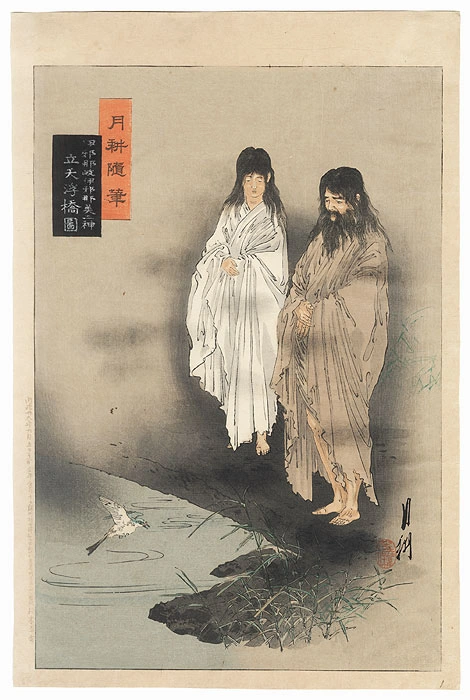
Source: Fujiarts
The Creation of Japan
In the ancient mythologies of Japan, the world was once a blob of shapeless chaos devoid of any order or structure. To bring about some semblance of harmony, the older generations of gods assigned the task of creation to the divine couple, Izanagi and Izanami. The gods gave them a jeweled spear known as Ama no Nuboko to help them in their mission.
The celestial bridge or stairway connecting the realms of heaven and earth, also called Ama-no-hashidate (SarahLMaguire), served as the stage for the cosmic act of creation. Standing on this bridge, Izanami and Izanagi no Mikoto stirred the vast expanse of the ocean below. Pulling the spear out of the water, salt crystals formed into tiny droplets on the pointed tip. These delicate droplets soon began to fall back into the vast ocean below, creating a breathtaking display of islands.
The first island was Onogoro-Shima. The gods immediately used this island to build a house and host their wedding ceremony. It was on this sacred island that Izanami and Izanagi, the primordial gods, went on to create the eight principal islands of Japan – Awaji, Shikoku, Oki, Tsukushi (Kyushu), Iki, Tsu, Sado, and Oyamato. The creation of these islands played a vital role in the formation of Japan’s geography and culture.
Apart from the islands, the divine couple also created many gods. More than 800 kami exist under the Shinto religion, each with its unique role and significance. Some notable children born to Izanami and Izanagi were Oho-wata-tsu-mi (god of the sea), Kuku-no-shi (god of the trees), Oho-yama tsu-mi (god of the mountains), and Kagutsuchi (god of fire) (Cartwright).
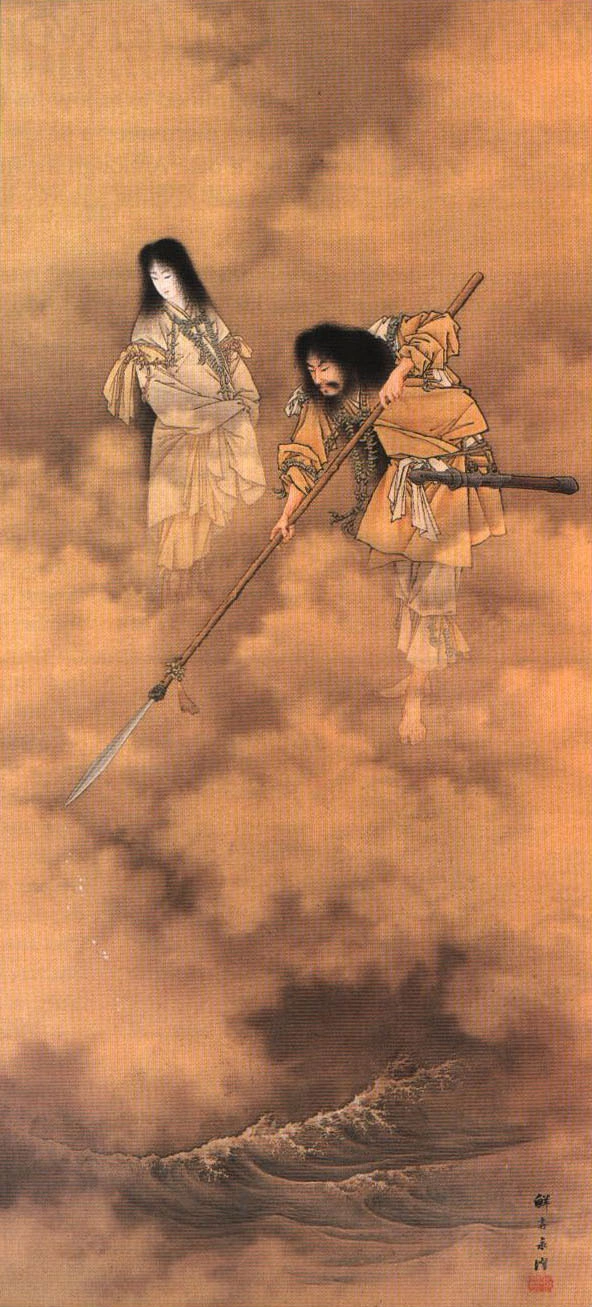
Source: Wikipedia
The Death of Izanami No Mikoto
The passing of Izanami is a significant and sorrowful moment in Japanese mythology. During the birth of her son, Kagutsuchi (the fire god), Izanami was severely burned and suffered immensely from her injuries until her eventual death. As a result of her anguish, many other divine beings were born from her tears. Izanami’s death brought Izanagi no Mikoto immense sadness and hopelessness. Overwhelmed by his sorrow, he set out on a quest to the underworld, known as Yomi, in a desperate attempt to bring Izanami back to the living. However, upon finally discovering her in the realm of the dead, he was horrified to find that she had transformed into a ghastly and decaying figure, surrounded by the spirits of the deceased. When Izanagi no Mikoto asked for Izanami’s return, she told him that she had already eaten the food of the underworld and was now stuck there. He was upset by her appearance and the fact that she could never leave, so he left Yomi and blocked the entrance with a boulder to keep Izanami from following him (Cartwright).
This devastating incident highlights how goddess Izanami embodies the duality of being both a creator and a guardian of death, symbolizing the cyclical essence of life and the balance between creation and destruction. The story of Izanami’s death and her journey into the underworld has become a significant aspect of the Shinto religion, shaping how the culture views life, death, and the afterlife.

Source: Nightcafe
Modern appearances
Concerning modern appearances, Izanami is present in the famous anime Naruto. Within the Naruto anime universe, Izanami is a powerful technique that utilizes the Dōjutsu abilities of a skilled ninja. This ability shows a loop of specific events to the victim and determines the victim’s fate. The primary goal of Izanami is to encourage the victim to accept their predetermined fate naturally, thus preventing any potential misuse of the ability, which could result in the removal of the boundary between reality and illusion (“Izanami”).
Final thoughts
Izanami, a prominent figure in the folklore of Japan, has left an indelible mark on the country’s cultural landscape. Her story has served as a source of inspiration for countless writers, poets, and artists who have found in her life a powerful symbol of the enduring connection between the divine and the human experience. Through her mythological influence, Izanami continues to be a testament to the enduring power of storytelling, which can transcend generations and shape how we understand ourselves and the world around us.
References
Cartwright, Mark. “Izanami and Izanagi.” World History Encyclopedia, 6 Dec. 2012, www.worldhistory.org/Izanami_and_Izanagi/.
“Izanami.” Myths and Folklore Wiki, mythus.fandom.com/wiki/Izanami.
“Izanami, Japanese Goddess: Mythology & Role | Who Is Izanami-No-Mikoto?” Study.com, 2023, study.com/academy/lesson/izanami-japanese-goddess-mythology-role.html#:~:text=Izanami%20is%20a%20Japanese%20creation.
SarahLMaguire. “The Story of Izanagi and Izanami: A Japanese Creation Myth.” Owlcation, Owlcation, 28 Apr. 2011, owlcation.com/social-sciences/IzanagiandIzunami.
“What Is Obon?” Jw-Webmagazine.com, 20 July 2022, jw-webmagazine.com/obon-in-japan/.
Did we miss something? Do you know another aspect of this legend? Don't hesitate to reach out!
Like this project
0
Posted Sep 16, 2023
A client hired me to write several informative pieces on Japanese Goddesses, and this blog post centers around the Goddess of Creation, Izanami.
Likes
0
Views
1154
Tags
Ghostwriter
Blog Writer



